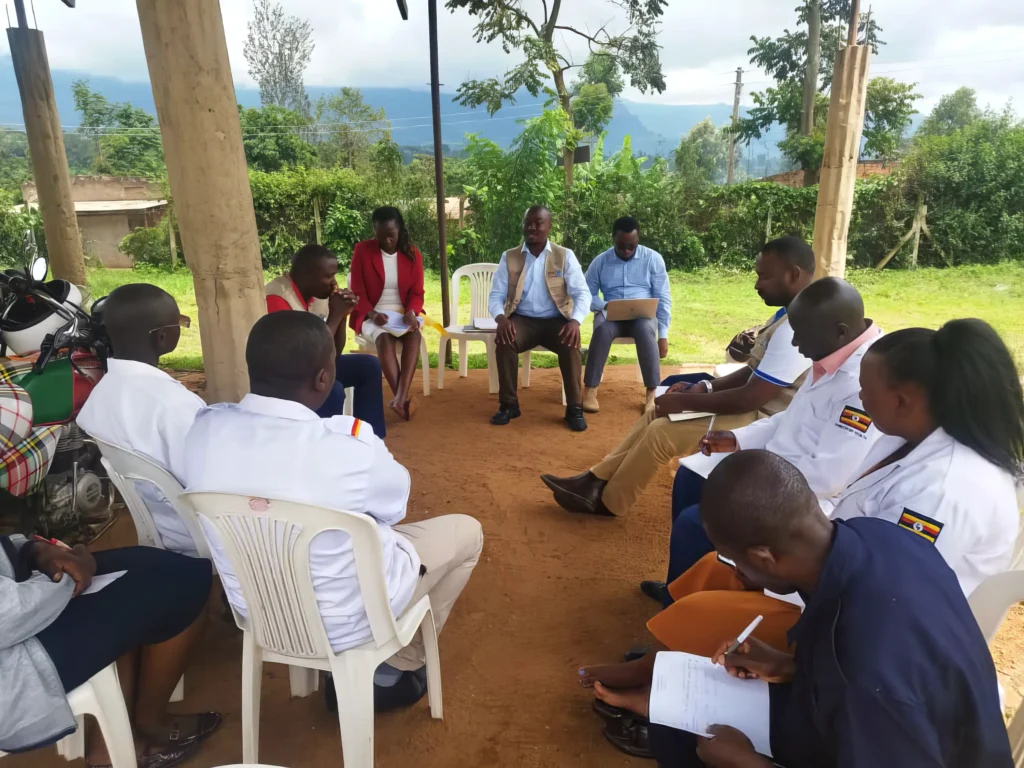Imagine a situation where a young man arrives at a primary health facility to seek treatment for common fever symptoms. Imagine that the health care worker is unable to detect the underlying cause of the symptoms, and mistakenly diagnoses another illness before sending the man home to unknowingly infect members of his community. Imagine the health care worker has inadequate personal protective equipment and later contracts the same illness, allowing them to infect other colleagues before having to take time off to recover. Imagine each infected person is allowed to continue spreading the infection to others before the source of the problem is identified.
This hypothetical situation isn’t rare—it happens regularly in primary health facilities that aren’t adequately prepared to find and stop outbreaks. Indeed, a health care worker getting sick is often the first sign of an outbreak. Primary health facilities are the cornerstone of functional health systems, but they’re rarely staffed, supported or provided with the essential tools they need to prevent epidemics. A health facility that’s equipped and trained can make the difference between an outbreak that’s stopped in its tracks and one that spirals into an epidemic. Epidemic-Ready Primary Health Care, or ERPHC, is an approach to primary health care developed by Resolves to Save Lives that seeks to make sure primary health facilities can do just that.
What is Epidemic-Ready Primary Health Care?
An Epidemic-Ready Primary Health Care (ERPHC) system is one that can prevent, detect, and respond to outbreaks while maintaining essential health services. An ERPHC system can find cases quickly, manage them safely and cope with the increased demands they bring. Through our ERPHC initiative, we’re partnering with primary health care facilities to ensure they are “epidemic-ready”—by strengthening relationships between facilities and the communities they serve and by training and mentoring health care workers to prevent, detect, and manage outbreaks while protecting themselves and others.
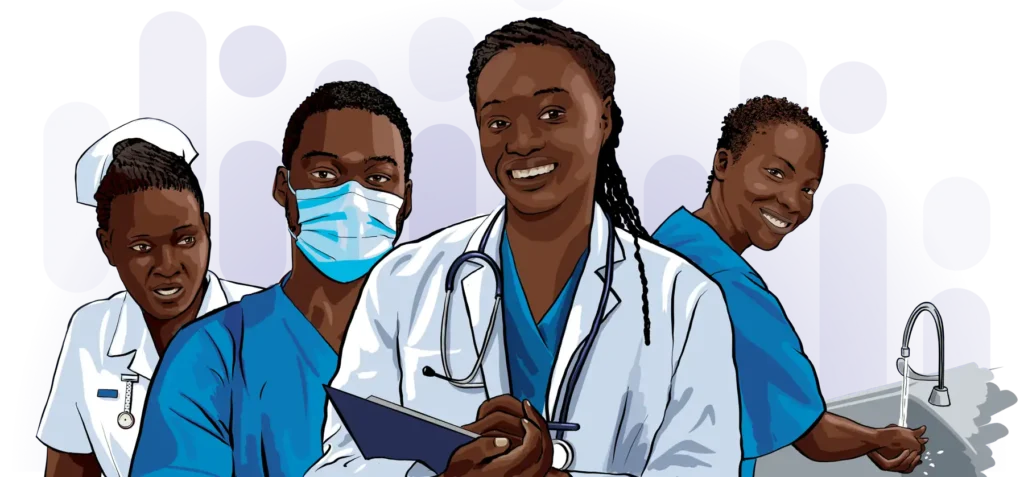
“ERPHC can be summarized in four words: connect, detect, protect and treat,” said Stacey Mearns, who is spearheading this initiative at Resolve to Save Lives. “It enables frontline health care workers to ‘connect’ with local communities, ensures they can ‘detect’ and promptly report suspected cases, ‘protect’ themselves and others by applying correct infection prevention and control precautions, and ‘treat’ suspected cases while continuing to deliver health services.”
Implementing ERPHC
Mearns says ERPHC refers to a primary health care system that can effectively prevent, detect and respond to outbreaks while continuing to deliver essential health services. “It’s an approach that seeks to connect and integrate the public health functions of epidemic preparedness and response with clinical health services at the point of health service delivery.” In other words, ERPHC enables a seamless flow of information and support between frontline workers and public health agencies, thereby ensuring effective resource allocation and coordinated response efforts.
Resolve to Save Lives is currently implementing ERPHC with partners in 635 health facilities across Ethiopia, Nigeria, Sierra Leone and Uganda—thereby strengthening capacities through regular mentorship and simplification of technical resources to build the knowledge, skills and confidence of health care workers. ERPHC seeks to build connections across different technical teams, strengthen approaches for managing public health emergencies, improve communication and coordination across different health agencies, and regularly analyze available data to inform performance improvement efforts.
Each health facility is given an “ERPHC score” that measures its overall capacities in these essential areas. And now that nine months have passed, the team is reviewing how those scores have changed from the baseline scores recorded before implementation started.
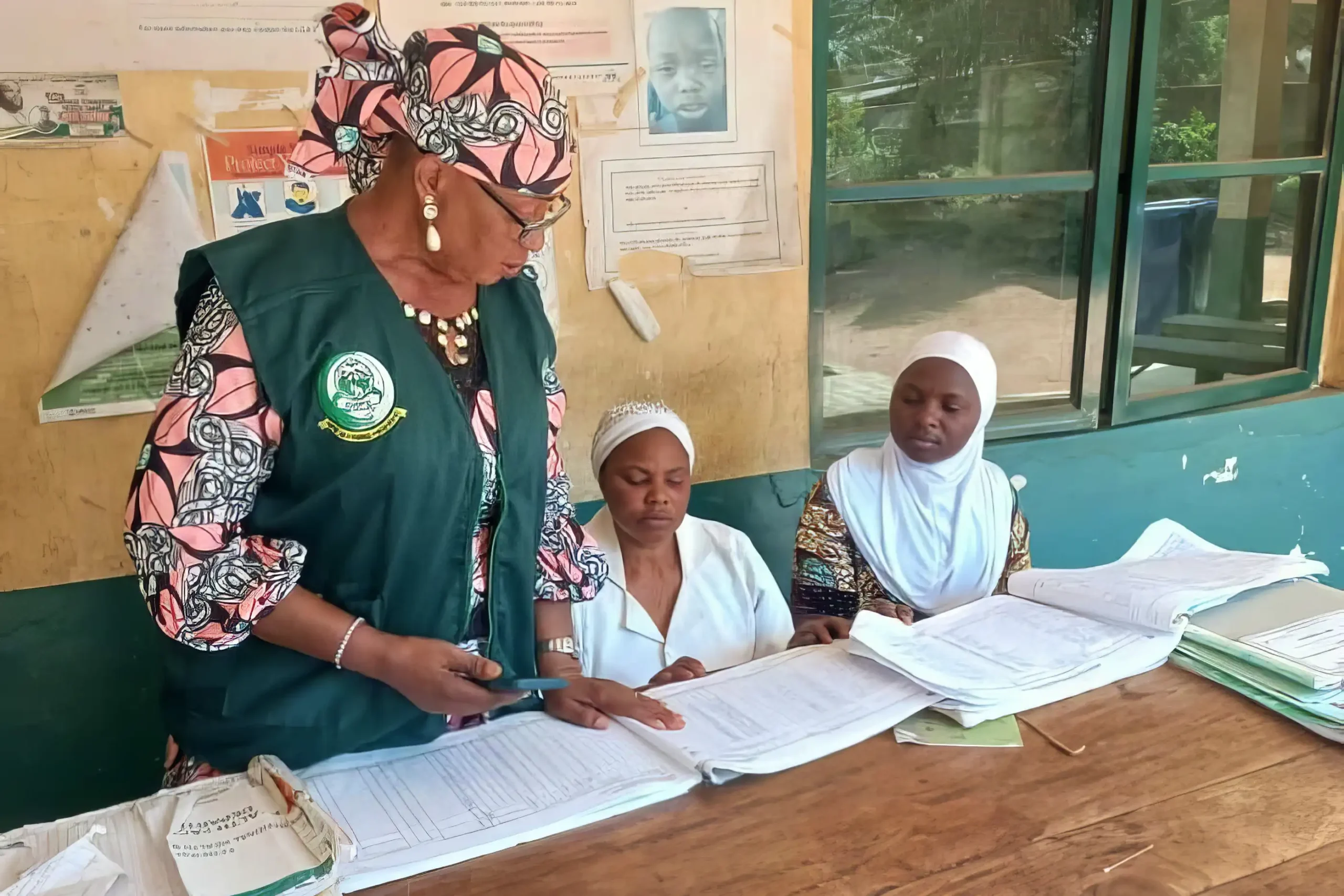
Findings from the first nine months
In less than a year, ERPHC has already driven tangible improvements across all facilities, which include primary health facilities in a range of settings including government facilities, prison facilities, urban and rural facilities and large and small facilities. Analysis of the initial data has provided valuable insights and illustrated remarkable progress across these sites, including:
Better case detection and reporting. Nine facilities detected confirmed cases during the ERPHC implementation period, and all facilities met 7-1-7 targets for detection and notification for 1 cholera, 2 diphtheria, and 59 measles cases.
Improved disease surveillance. Across all countries, the average number of alerts raised by health facilities each month has more than doubled. Surveillance performance, meanwhile, has increased from 76% to 96%. Health facilities generating and analyzing more alerts ultimately means faster and more effective responses to outbreaks.
Health care workers are better equipped to keep themselves and their patients safe. Infection prevention and control (IPC) has improved from 56% to 93%. The number of health care workers performing correct hand hygiene has increased from 47% to 97%, and the number correctly donning and doffing personal protective equipment has increased from 34% to 83%.
Rapid improvement. In just nine months, the average ERPHC facility has seen a 28% increase in its overall ERPHC score. “This timeline is much faster than what was originally predicted and is a sign of the operational approach the project takes, using regular facility assessments to inform data-driven quality improvement activities,” said Mearns.
There are still important bottlenecks to address. Initial data has highlighted issues that health facilities need to strengthen, including inconsistent feedback from health authorities, supply chain bottlenecks, and limitations with physical infrastructure.
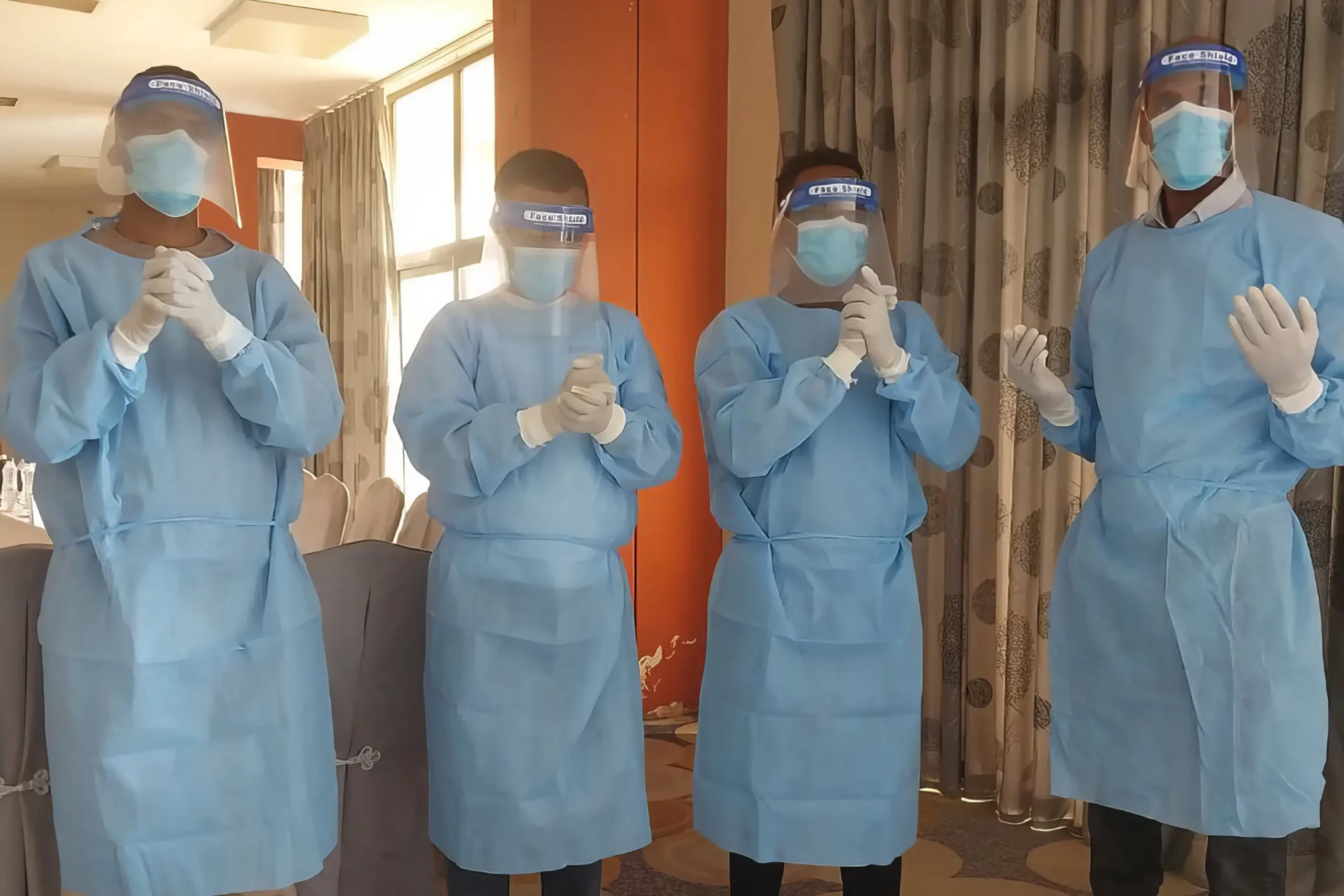
Empowering health facilities
“In addition to quantifiable gains, our observations from field visits and engaging with health care workers has shown us that staff also feel more confident in their work,” adds Mearns.
Sister Hilda, the nurse in charge at Wanda Health Centre in Uganda, explained how ERPHC is empowering her and her team to tackle outbreaks: “We were scared to open during COVID. We didn’t think we could manage, but with support we treated hundreds of patients as one of the only clinics in the district that had oxygen. Then, not long after COVID, Ebola came. Again, the staff were scared, and we weren’t sure we could stay open. But the mentors came and trained us, helped us with protocols for triage and set up an isolation room… We felt prepared, we felt ready, we no longer needed to run.”
Government partners are also reporting tangible benefits in participating facilities after just a few months. Dr. Mulugeta Endale, Deputy Head of Addis Ababa City Administration Health Bureau, said “There is a visible difference between health facilities under this project and those that are not.”
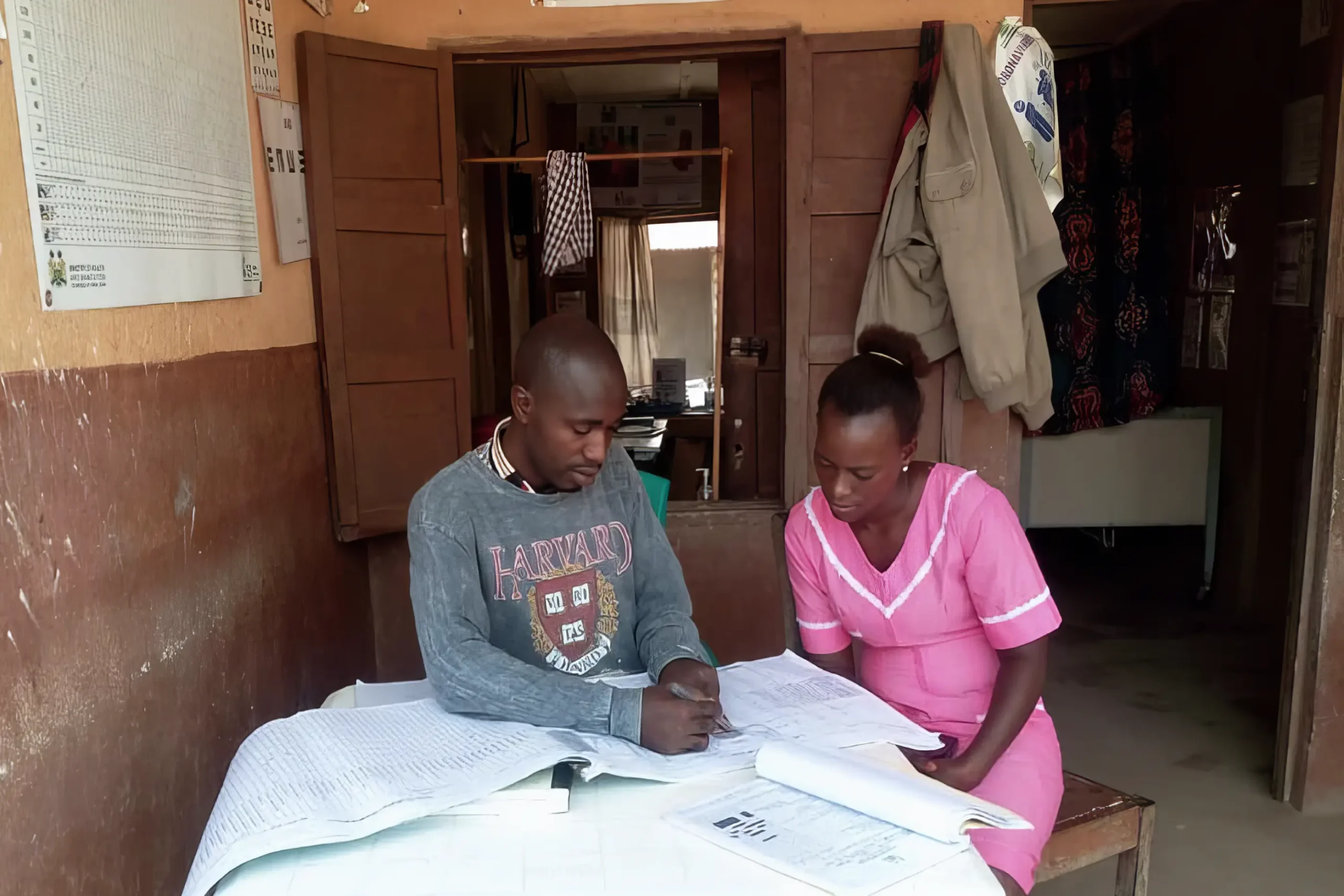
Doubling down on what works
In the coming months, Resolve to Save Lives will continue working with partners in Ethiopia, Nigeria, Sierra Leone and Uganda and extend the ongoing implementation of ERPHC. Early data have highlighted gaps to be addressed, including making sure that knowledge gains in health care workers translate into behavioral changes several months later. “It’s not enough to know how to correctly wear personal protective equipment, or to do this only for a few days after the training,” said Mearns. “We know that ongoing mentorship is essential for making sure these gains are sustained over time, which is why mentorship forms an important part of our ongoing pilots.”
Mearns says her team will continue learning with and from partners at participating health facilities, with each providing insights on their unique local contexts as the team continues to assess their ongoing functional readiness for dealing with future outbreaks. Eventually, Mearns says, these learnings will inform robust technical resources that can be adopted by other countries across the region. Ultimately, Resolve to Save Lives is working to make sure every health facility is prepared to stop the next epidemic wherever it strikes.
“Outbreaks start and end in communities,” said Mearns. “We want ERPHC to become woven into the fabric of every primary health care facility, so that they’re best equipped to keep their staff, communities, and the world safe from the threat of future outbreaks.”
Find out more about Epidemic-Ready Primary Health Care (ERPHC) here.
